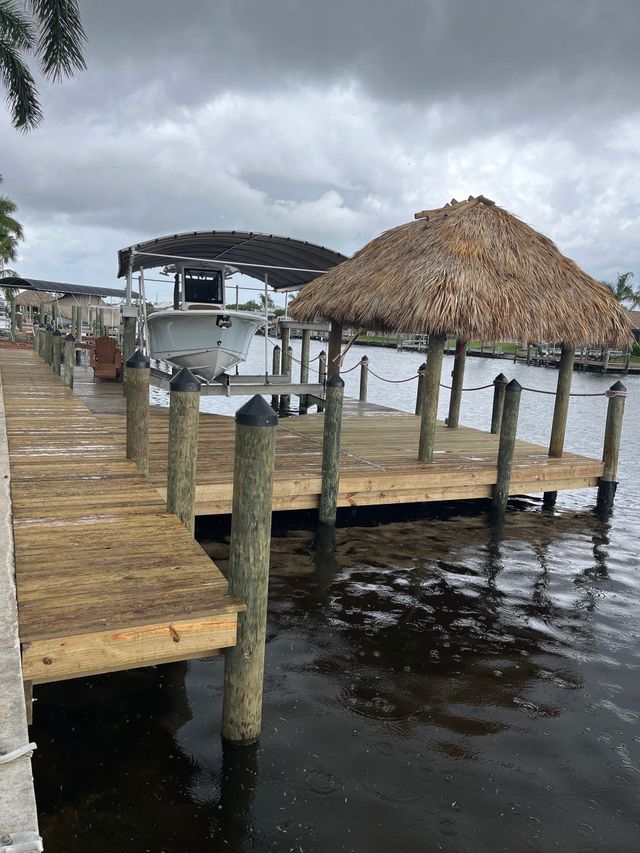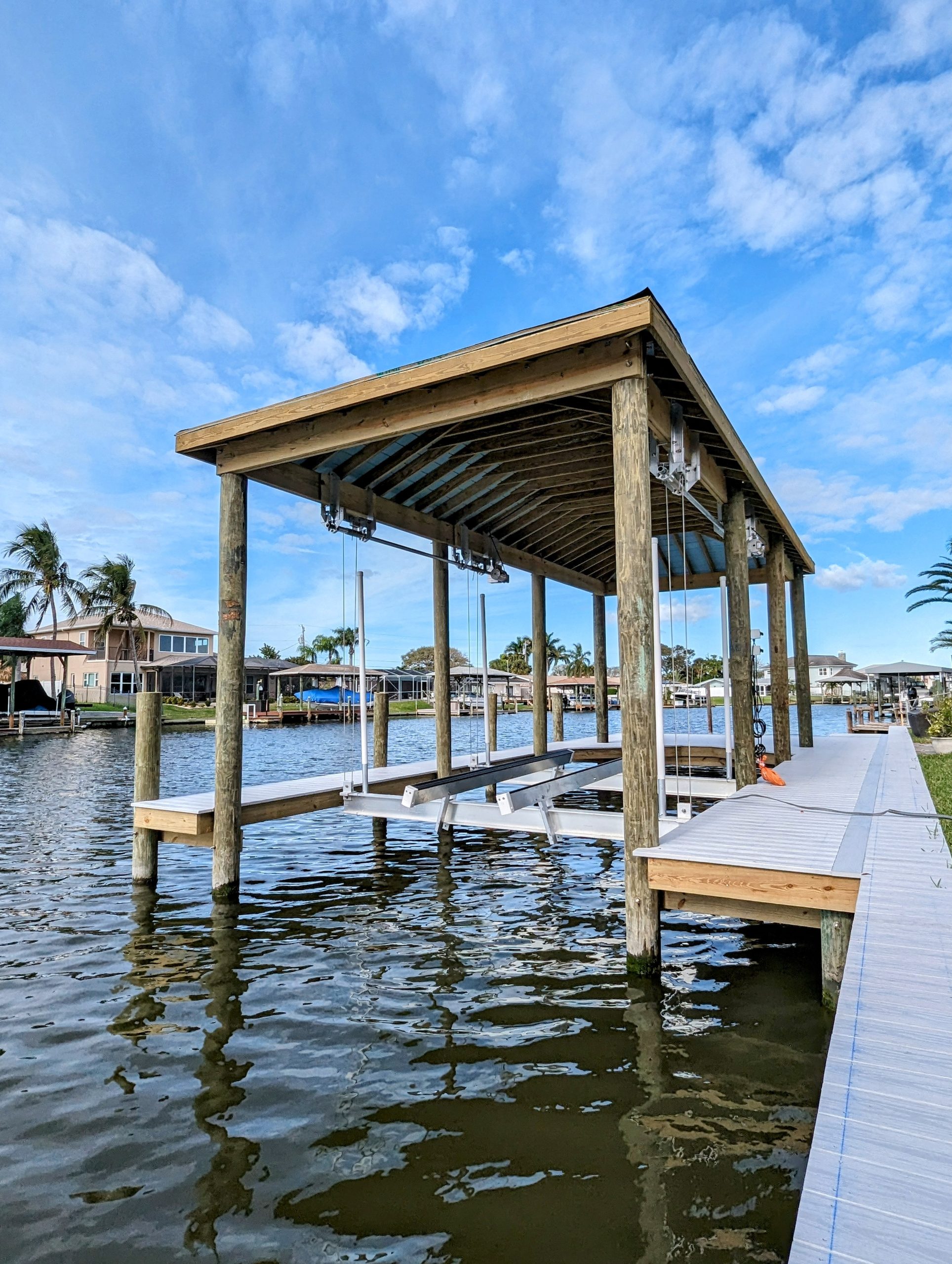Seasonal Preparations: When to Schedule Your Dock Repairs
Seasonal Preparations: When to Schedule Your Dock Repairs
Blog Article
Efficient Dock Repair Service Techniques: Making Certain Structural Honesty
Guaranteeing the architectural stability of anchors with effective repair techniques is vital for the durability and safety and security of aquatic centers. This entails a multi-faceted method starting with comprehensive evaluations making use of innovative innovations like finder devices and from another location operated automobiles (ROVs) to identify both noticeable and hid damages. Subsequently, picking the best repair service materials, such as corrosion-resistant alloys and composite products, is essential for toughness. Architectural support methods, including the execution of cross-bracing systems and load-distribution plates, play an important role in mitigating tension factors. The value of these strategies becomes apparent when exploring advanced repair techniques and preventative maintenance approaches.
Analyzing Dock Damages
Assessing dock damages is an essential initial action in making certain the structural honesty and safety and security of any docking facility. This first assessment involves a thorough inspection to recognize both hidden and visible problems. Secret elements to examine consist of the dock's structure, pilings, outdoor decking, and equipment. Each part has to be scrutinized for signs of wear, rot, corrosion, or other forms of degradation that might jeopardize the architectural honesty.
Architectural engineers or certified inspectors normally perform these evaluations using specialized tools and methods. As an example, undersea inspections might utilize finder devices or remotely operated lorries (ROVs) to discover submerged damage. Above water, visual inspections are complemented by utilizing moisture meters and other diagnostic devices to uncover underlying issues not right away visible to the nude eye.

Choosing Repair Work Materials
Selecting the ideal repair service materials is a pivotal action in the dock remediation procedure, one that straight influences the longevity and efficiency of the fixed framework. Product choice have to be driven by variables such as ecological problems, load-bearing needs, and compatibility with existing dock parts.
Along with wood, composite materials are significantly preferred due to their longevity and low upkeep demands. Compounds, typically made from a blend of plastic and timber fibers, provide exceptional resistance to rot, insects, and UV damage. For metal docks, choosing corrosion-resistant alloys such as galvanized steel or marine-grade light weight aluminum is necessary to protect against rust and make sure structural honesty in saline water conditions.
Epoxy materials and marine-grade sealants are essential for repairing cracks and sealing joints, offering a waterproof barrier and boosting the dock's general stamina. By carefully selecting top notch products, dock fixings can achieve resilient results, thus safeguarding versus future degradation and guaranteeing risk-free, trusted usage.
Structural Support Methods
Efficient architectural reinforcement methods are important in ensuring the security and longevity of dock repairs. This technique is particularly efficient for docks subjected to hefty tons or harsh ecological problems.
One more vital technique is the application of fiber-reinforced polymers (FRP) These materials offer high strength-to-weight ratios and exceptional resistance to deterioration, making them suitable for reinforcing concrete or wooden docks. my link FRP can be applied in strips or sheets and bonded with epoxy materials to improve architectural stability.
Bracing and anchoring systems also play a vital duty in structural support. Cross-bracing, making use of steel or wooden beam of lights, can counteract lateral forces, decreasing guiding and activity. Securing systems, such as helical piers or driven stacks, provide a stable foundation by moving lots to deeper, more stable soil layers.
Finally, the assimilation of load-distribution plates can aid distribute weight extra equally throughout the dock's surface area, alleviating localized anxiety points. These techniques jointly make sure that docks stay risk-free and robust, efficient in holding up against the rigors of their functional atmosphere.
Advanced Repair Service Methods

One more innovative method involves undersea welding, which enables repair work to be carried out without this post the demand to dewater the area. This method is specifically useful for addressing architectural concerns in immersed dock elements, ensuring very little interruption to operations. Boosted welding methods, combined with robot systems, supply precision and integrity, therefore prolonging the life-span of the dock.
Furthermore, cathodic protection systems are applied to protect against deterioration in metal dock frameworks. By utilizing sacrificial anodes or impressed current systems, these techniques effectively alleviate the electrochemical procedures that page cause material degeneration.
Last but not least, progressed tracking technologies, such as structural health surveillance (SHM) systems, offer real-time information on the condition of dock structures. These systems allow positive maintenance and timely interventions, inevitably making certain the long-term structural integrity of the dock.
Maintenance and Avoidance
Upkeep and prevention are essential concepts that underpin the long life and safety of dock structures. Routine inspections are extremely important, enabling very early detection of deterioration, possible weaknesses, and environmental effects. A proactive strategy, involving routine look for rust, rot, and structural shifts, minimizes costly fixings and lengthens the dock's functional life.
Precautionary actions need to include using protective coverings to steel elements to defend against corrosion and using cured timber to withstand decay. Additionally, making certain proper drain and ventilation can prevent water buildup, which is a typical reason of structural destruction. Including quality materials and sticking to maker standards during building and construction and fixing phases likewise play vital functions in improving sturdiness.

Educating workers in dock upkeep finest methods makes sure regular application of safety nets. Leveraging technological developments, such as drones for inspections and sensing units for real-time monitoring, can further enhance upkeep initiatives. By focusing on maintenance and prevention, dock owners can ensure structural honesty, operational safety, and cost-effective monitoring over the dock's lifespan.
Conclusion
Finally, maintaining the structural stability of aquatic facilities necessitates thorough dock repair techniques. Thorough examinations making use of innovative devices discover both visible and hid problems, while the choice of proper repair materials enhances toughness. Implementing architectural support techniques addresses stress factors properly. Advanced repair methods, combined with regular upkeep methods, make certain the dock continues to be safe and functional under varied ecological problems. Embracing these methods dramatically prolongs the lifespan and functionality of aquatic framework.
Making certain the structural honesty of docks via effective repair work techniques is critical for the long life and safety and security of aquatic centers.Picking the appropriate repair products is a pivotal step in the dock restoration process, one that straight influences the durability and efficiency of the repaired structure.Reliable structural support methods are critical in ensuring the security and longevity of dock repair services. By prioritizing upkeep and avoidance, dock proprietors can guarantee architectural integrity, operational security, and economical management over the dock's life expectancy.
In verdict, preserving the structural integrity of marine facilities necessitates comprehensive dock repair techniques.
Report this page